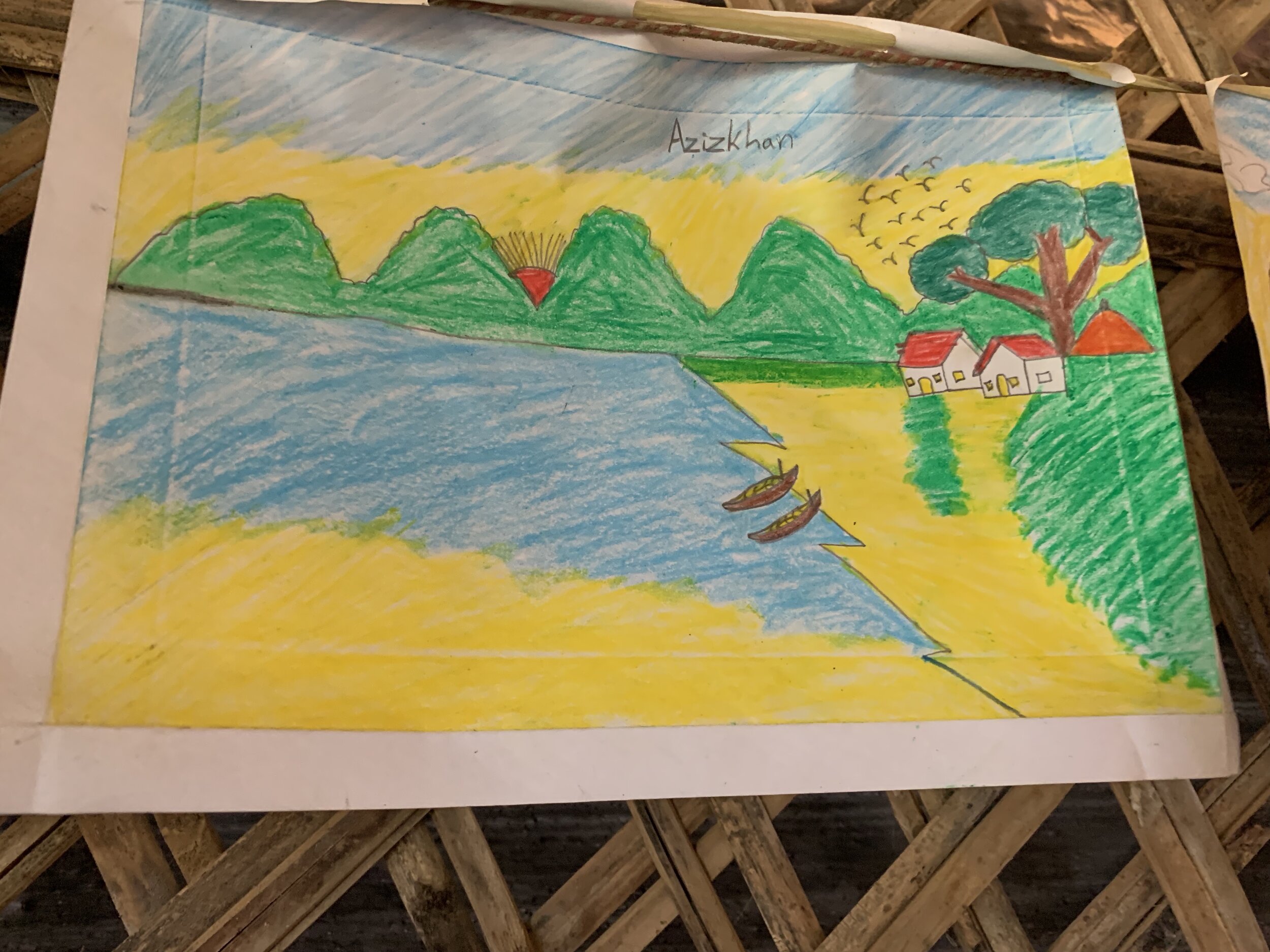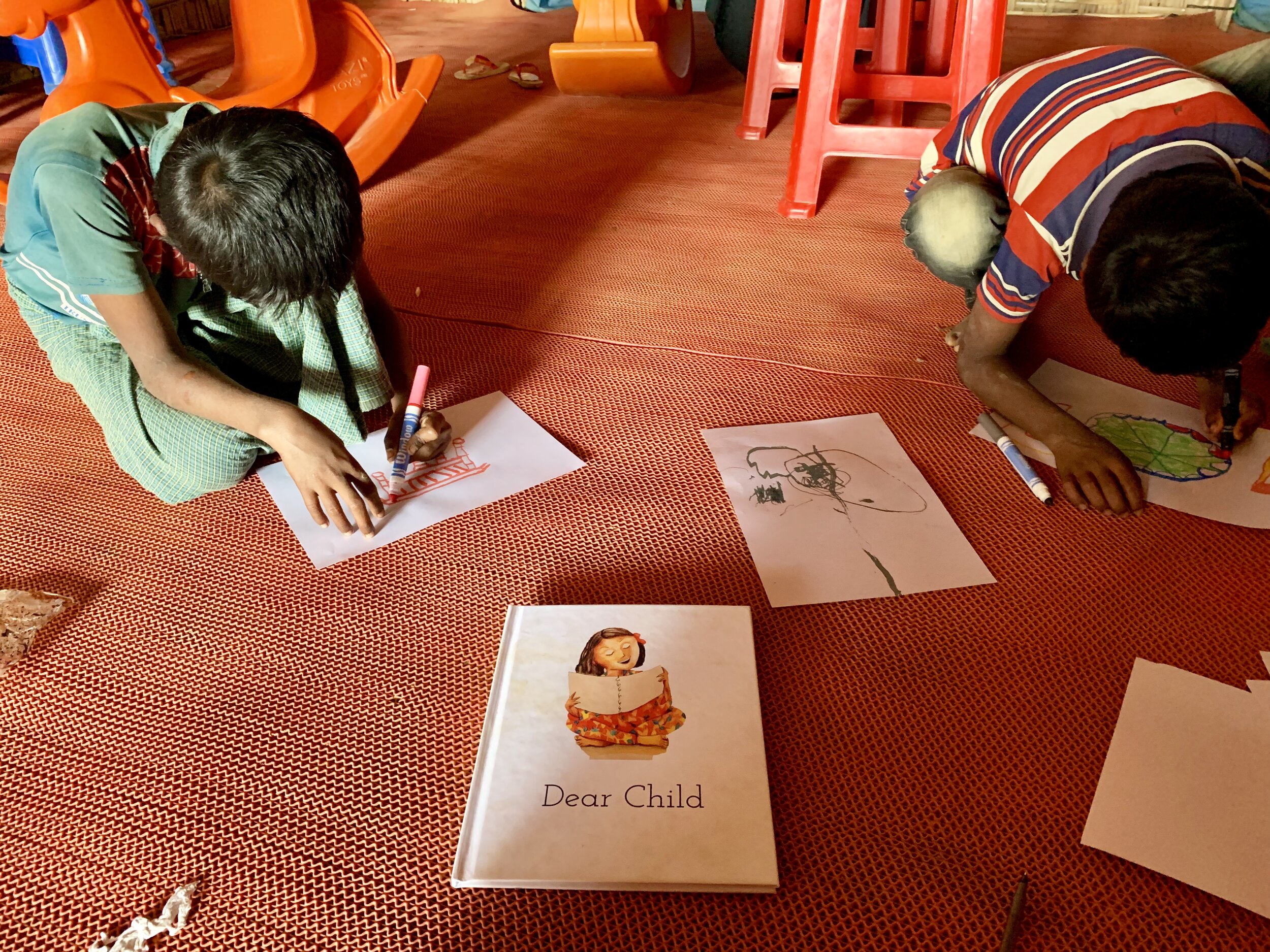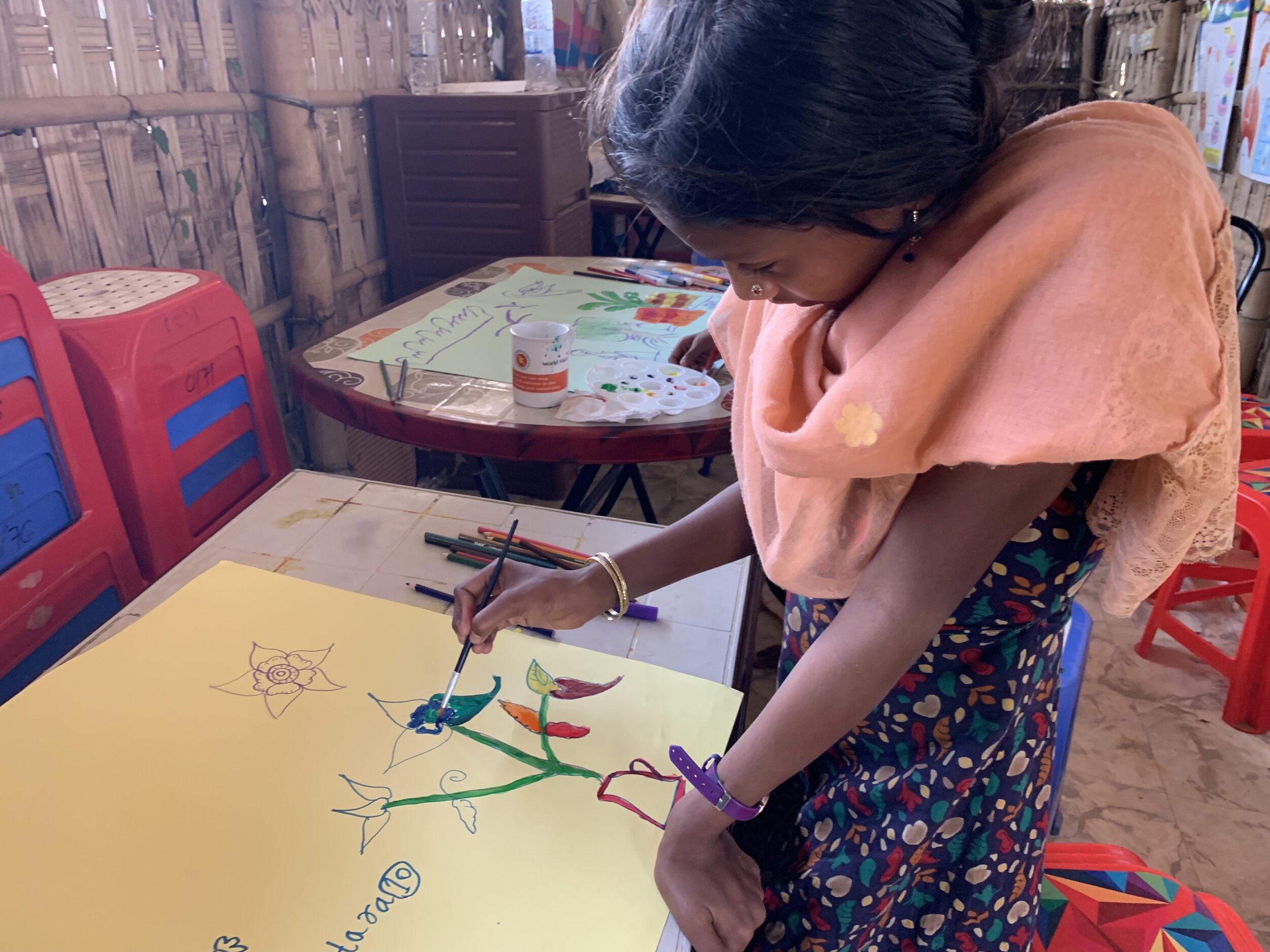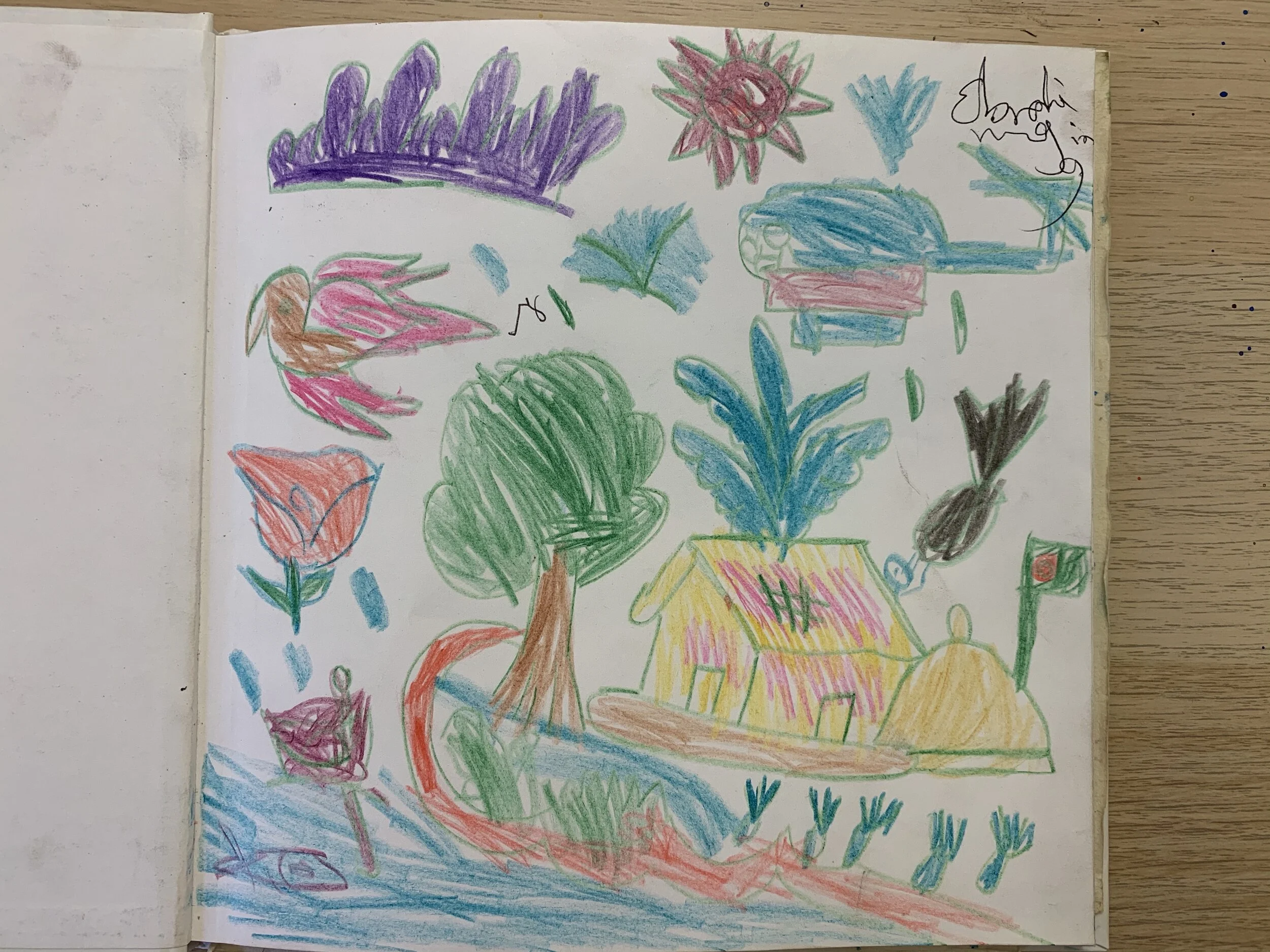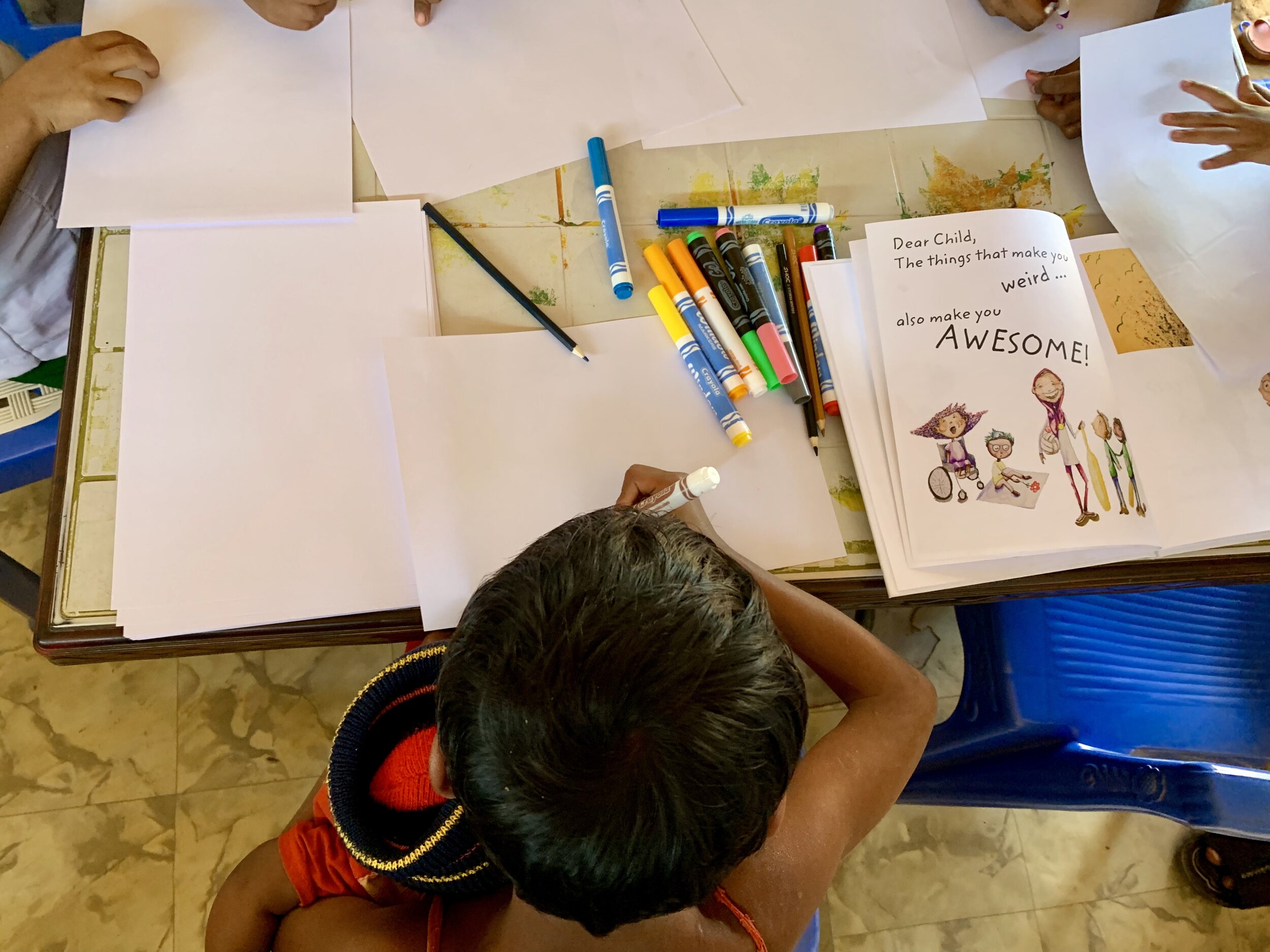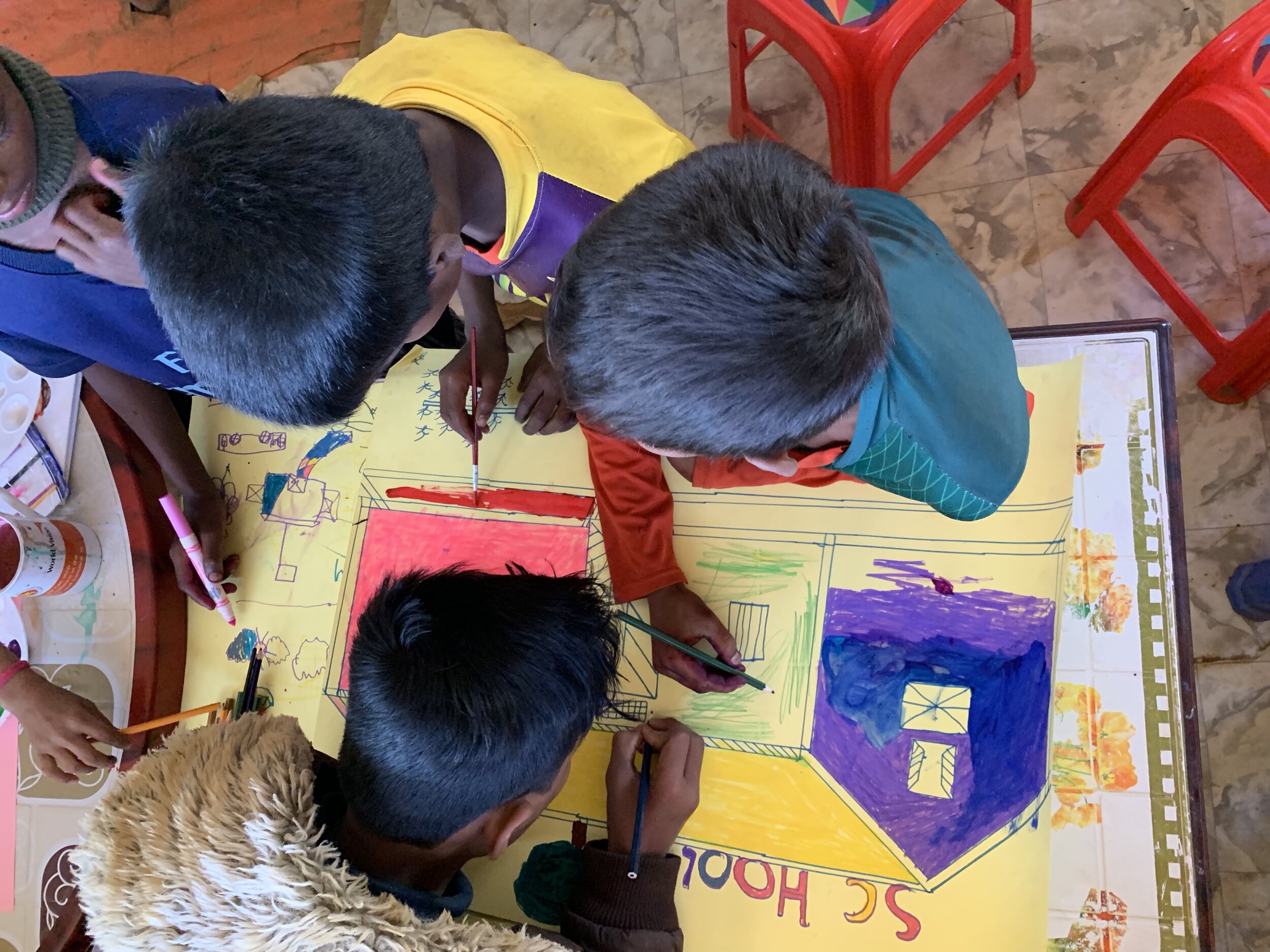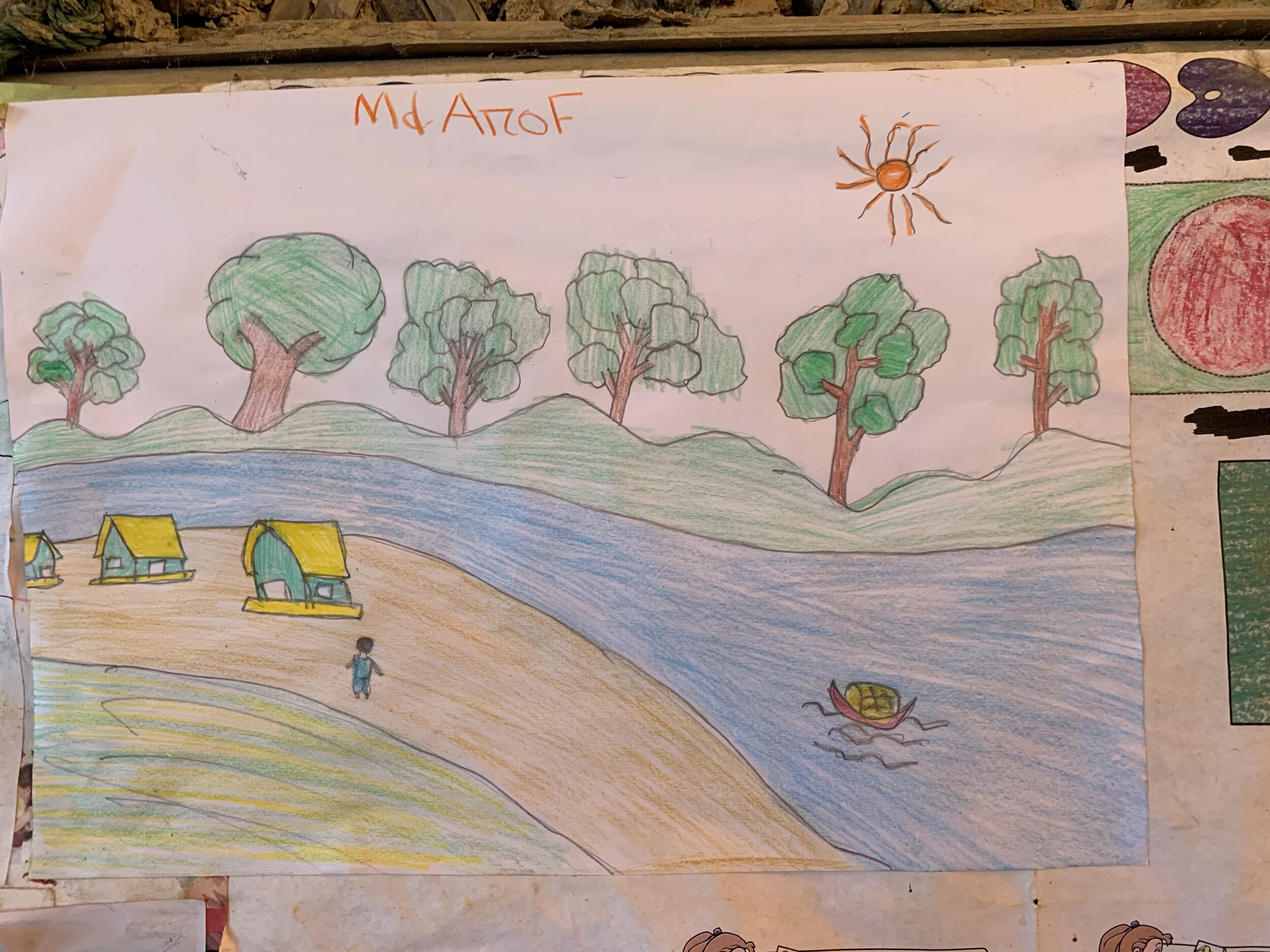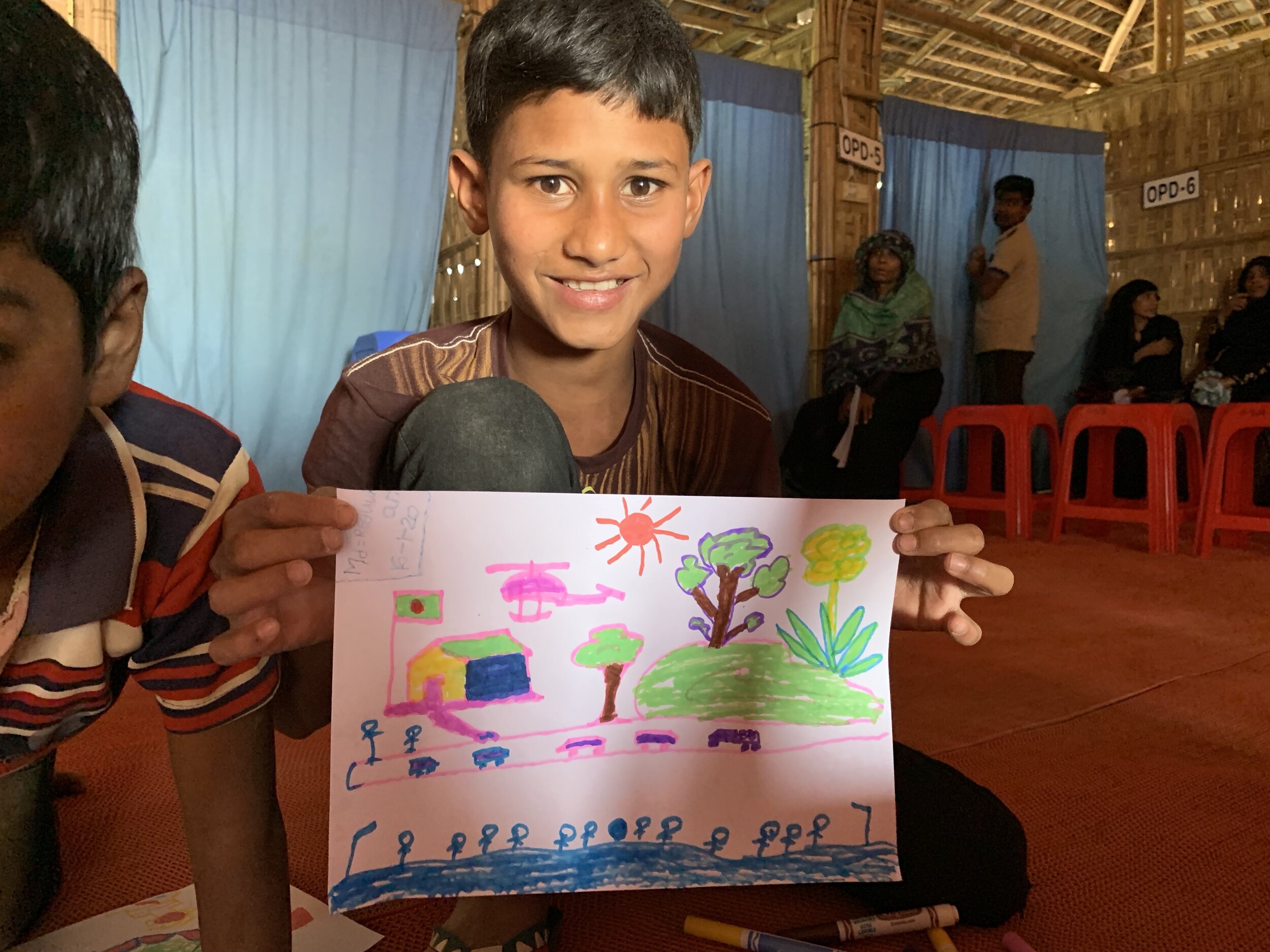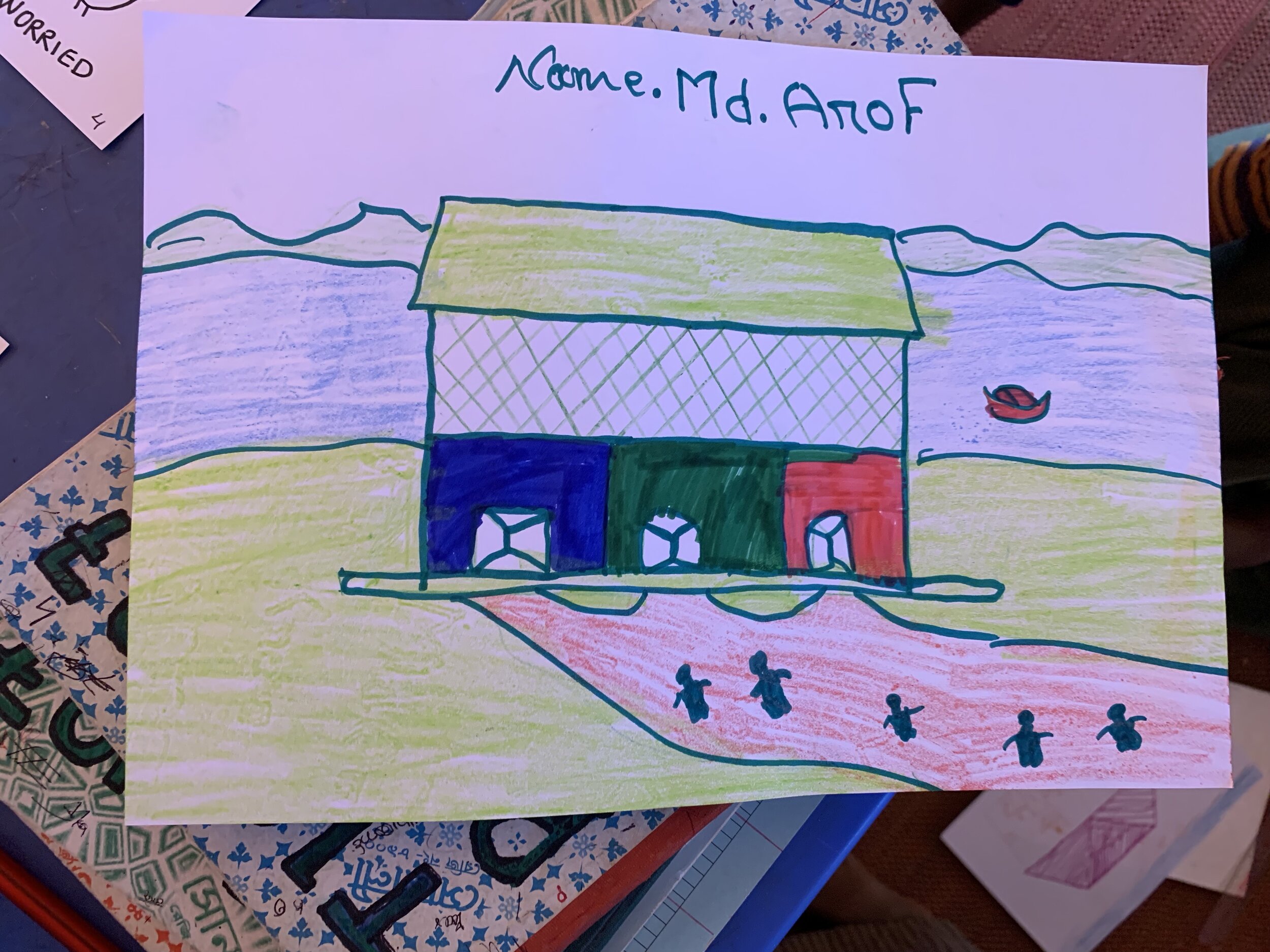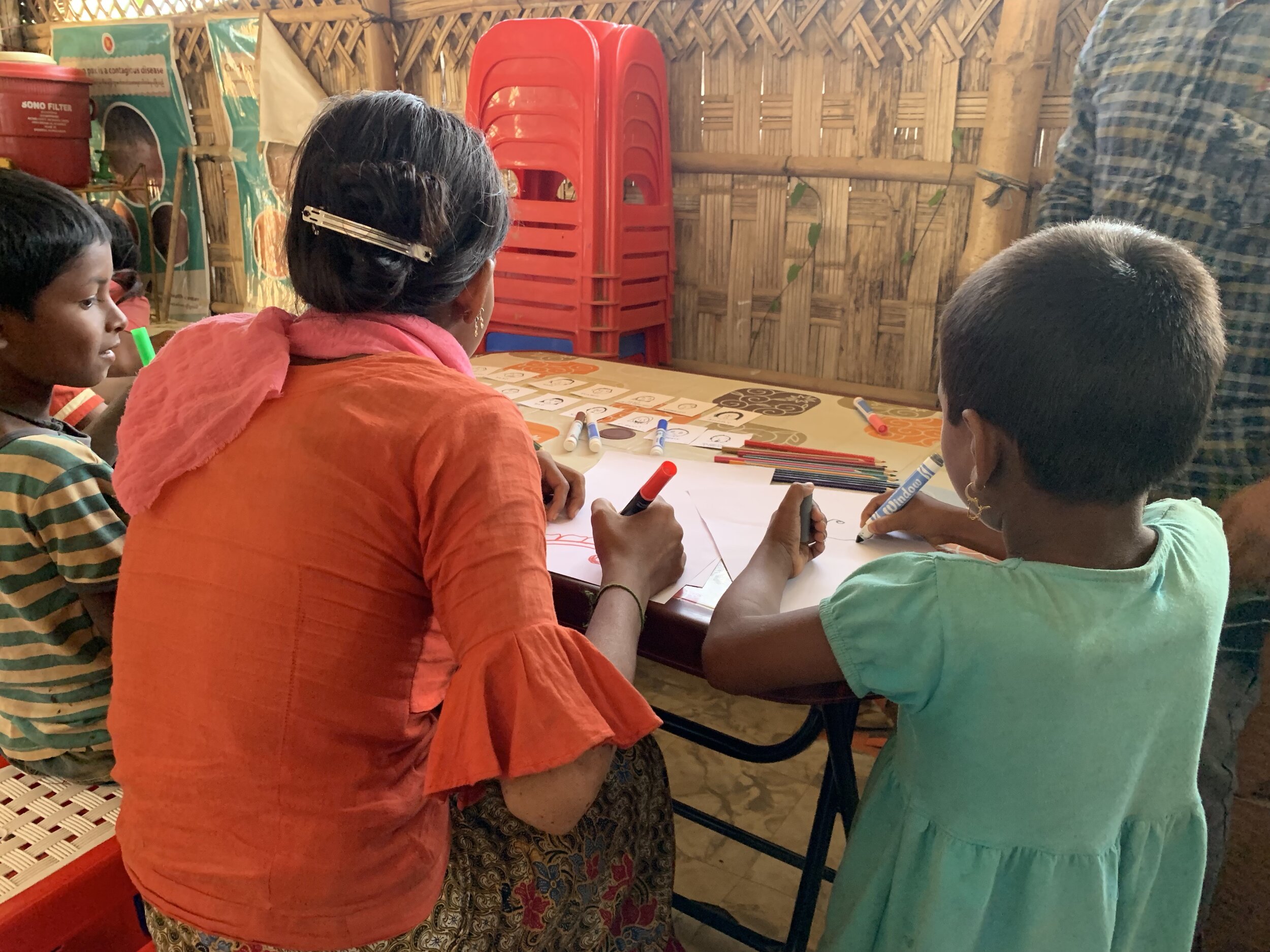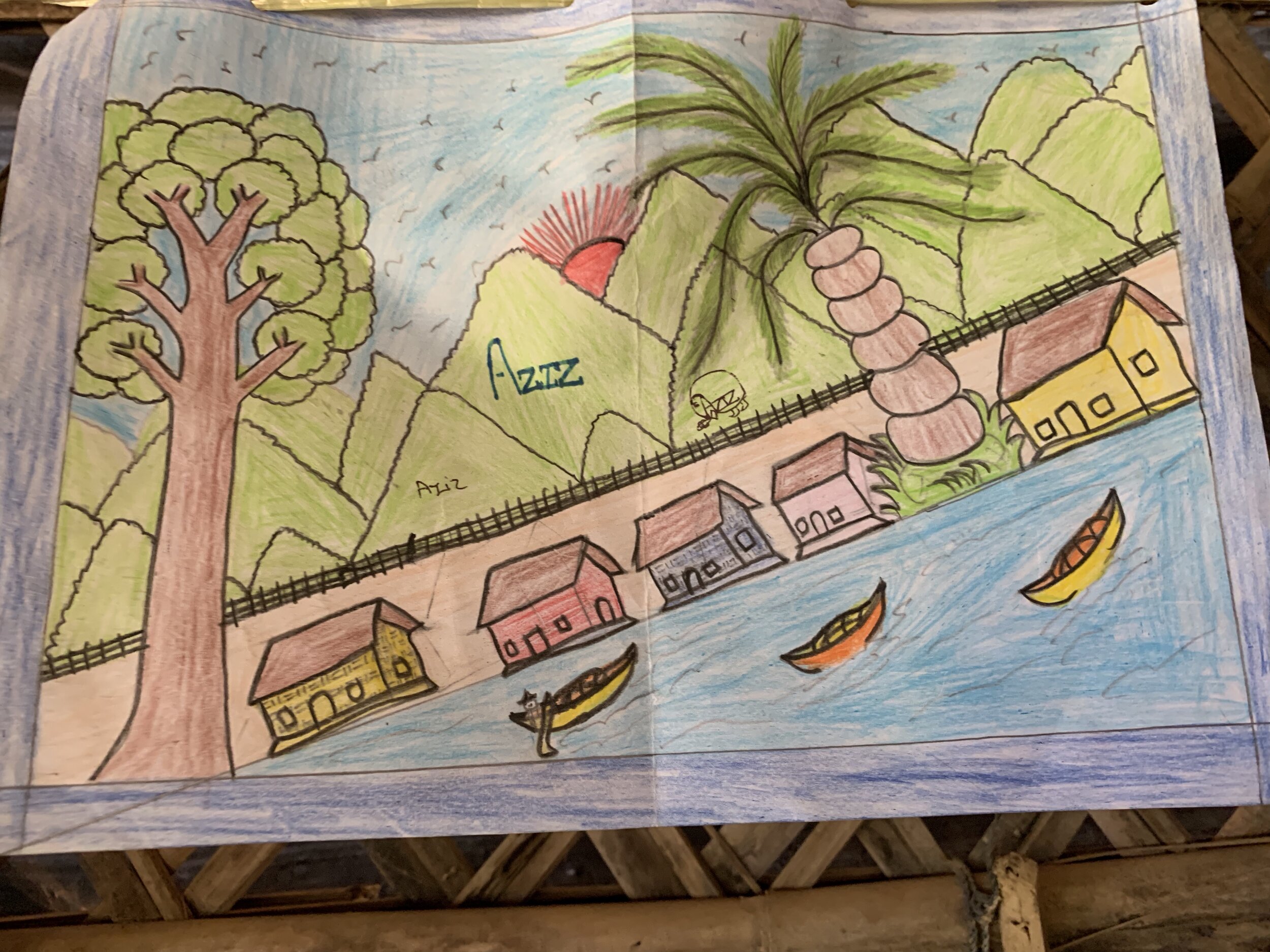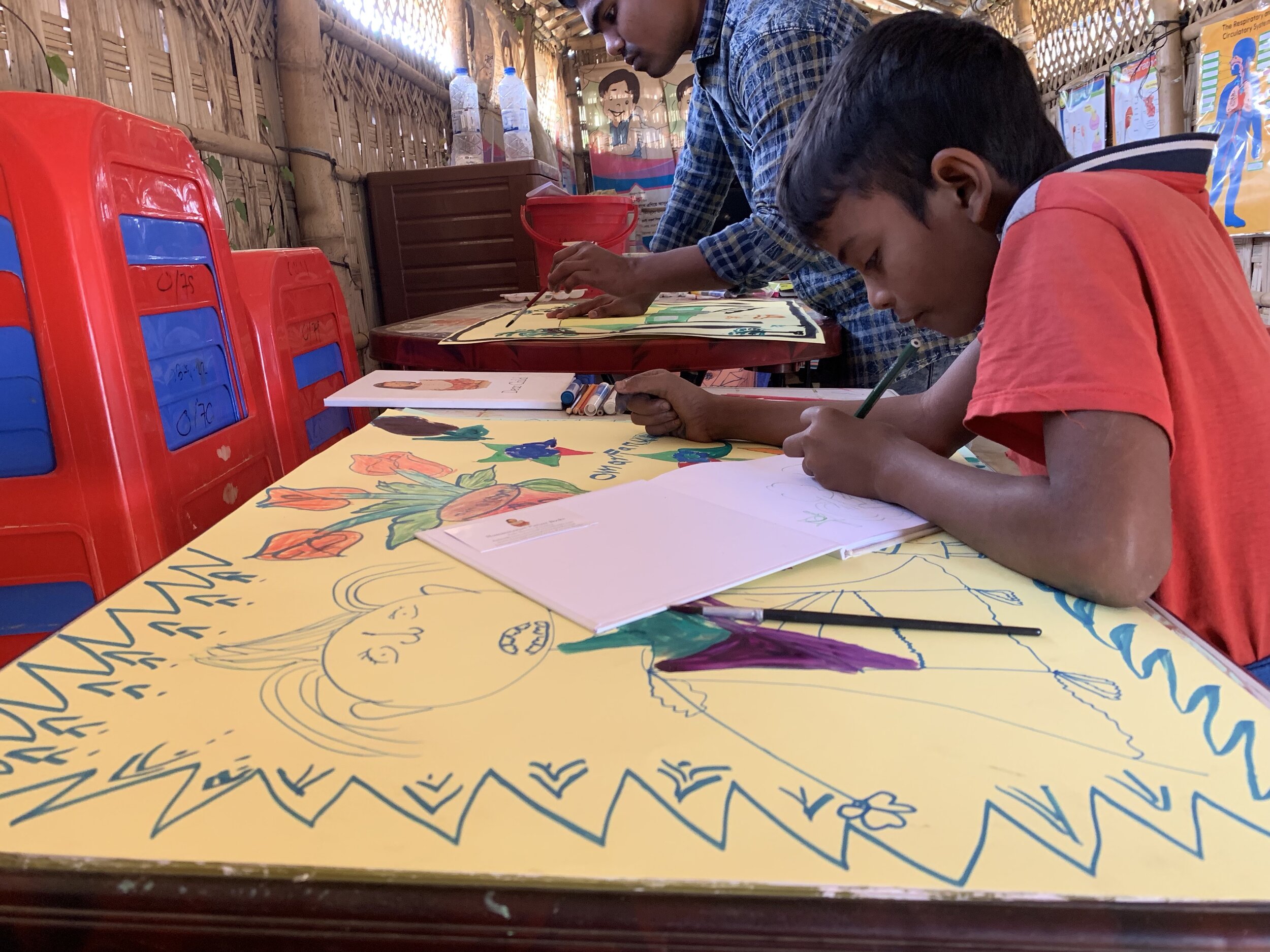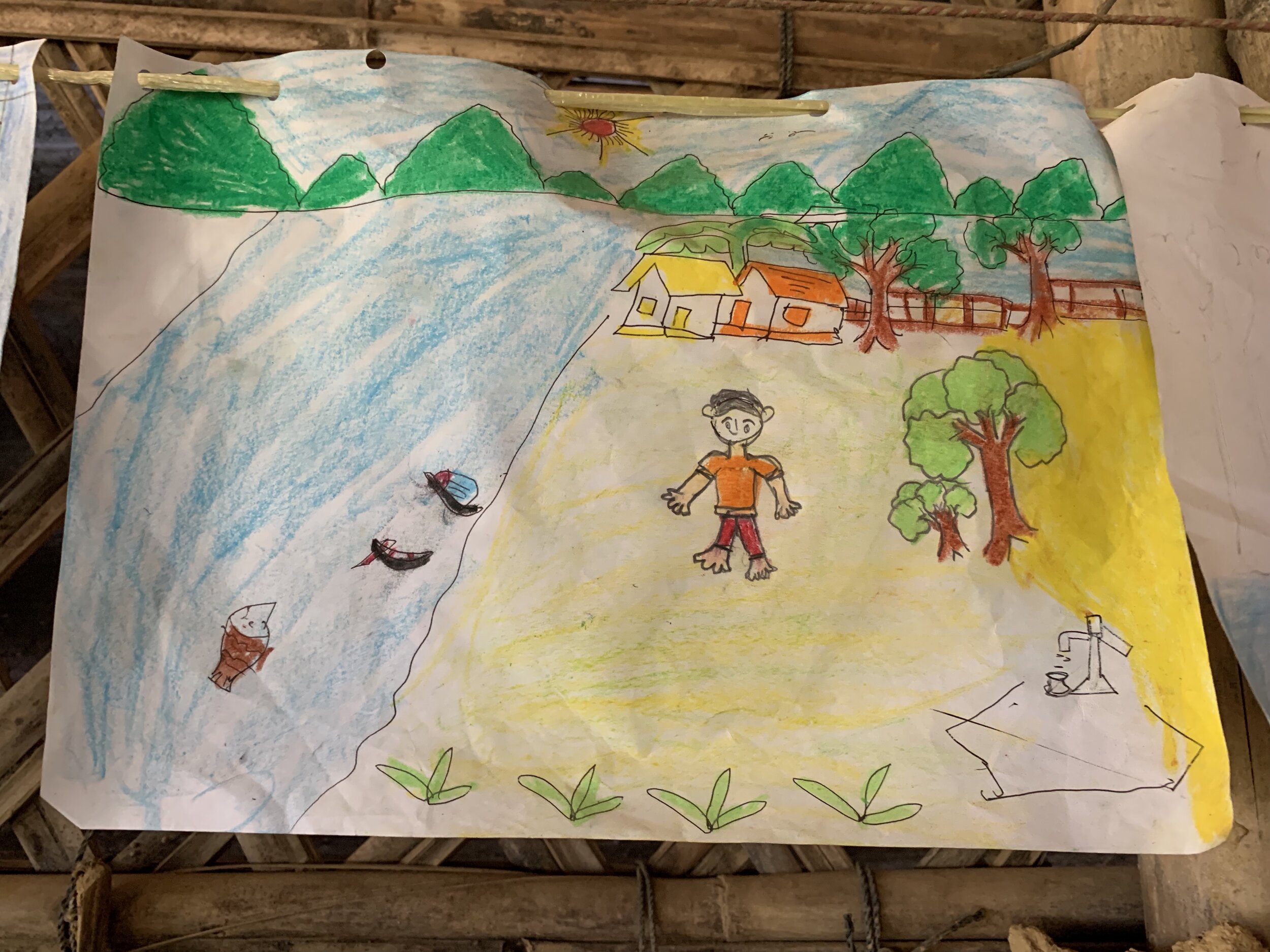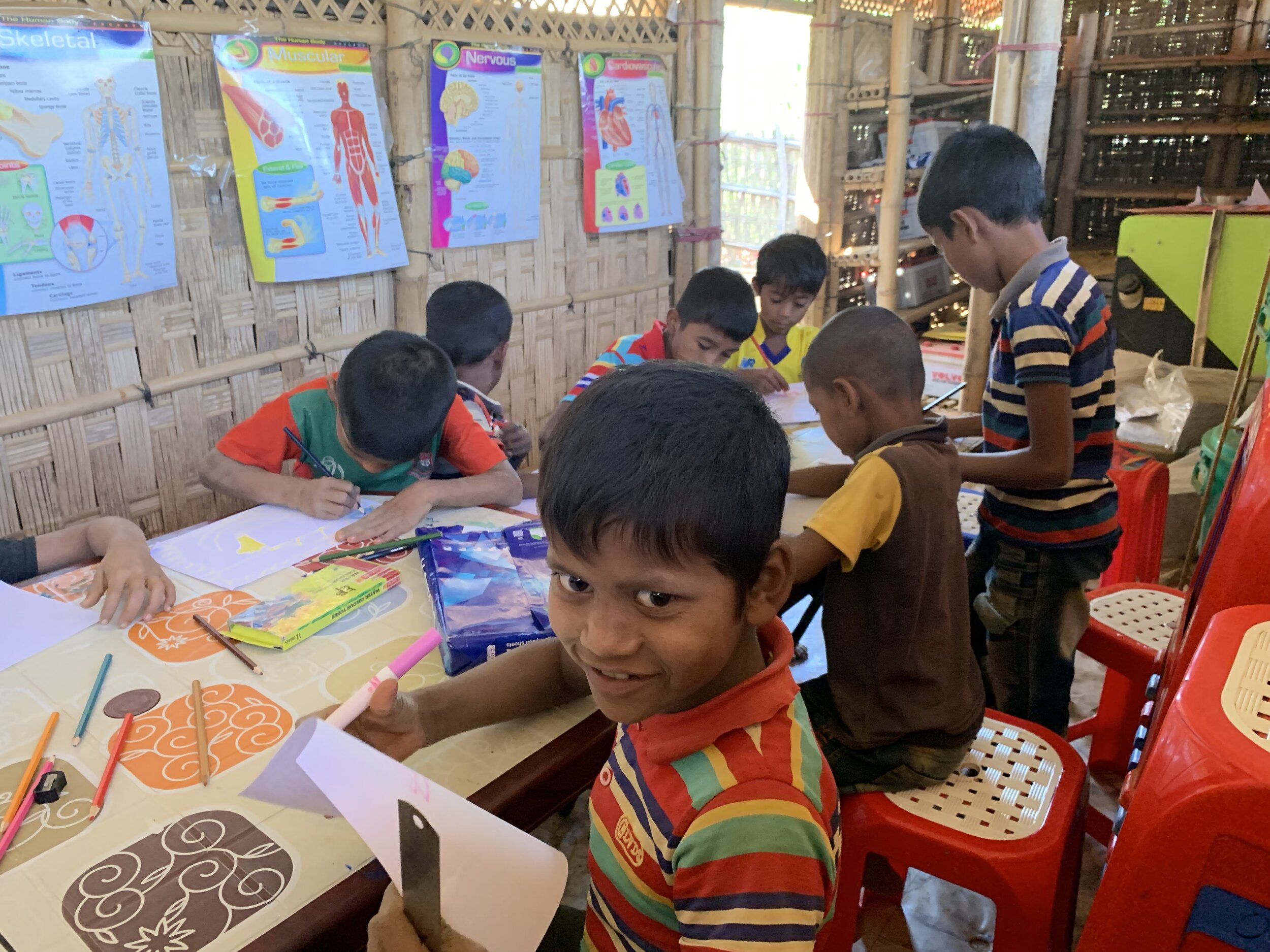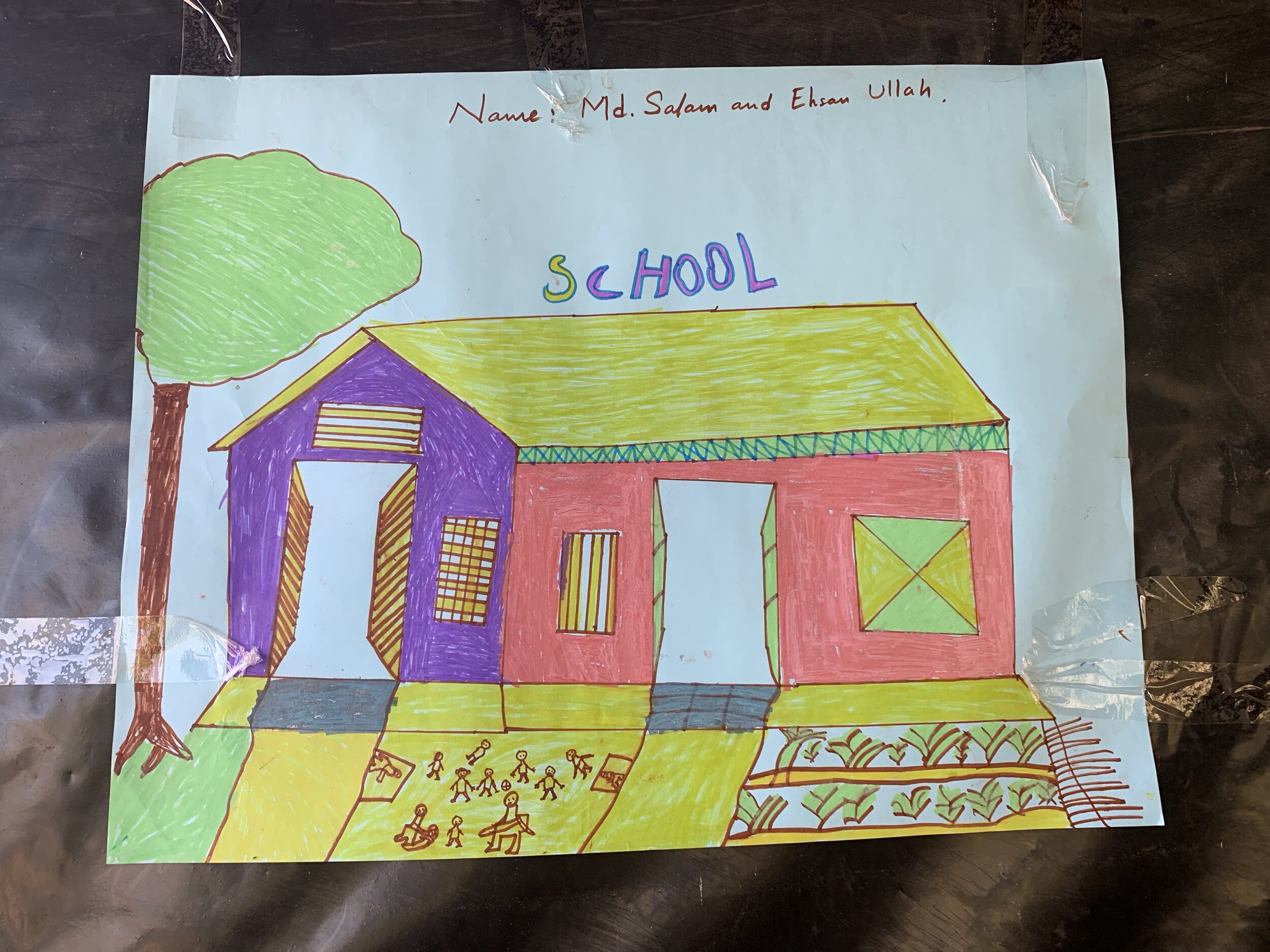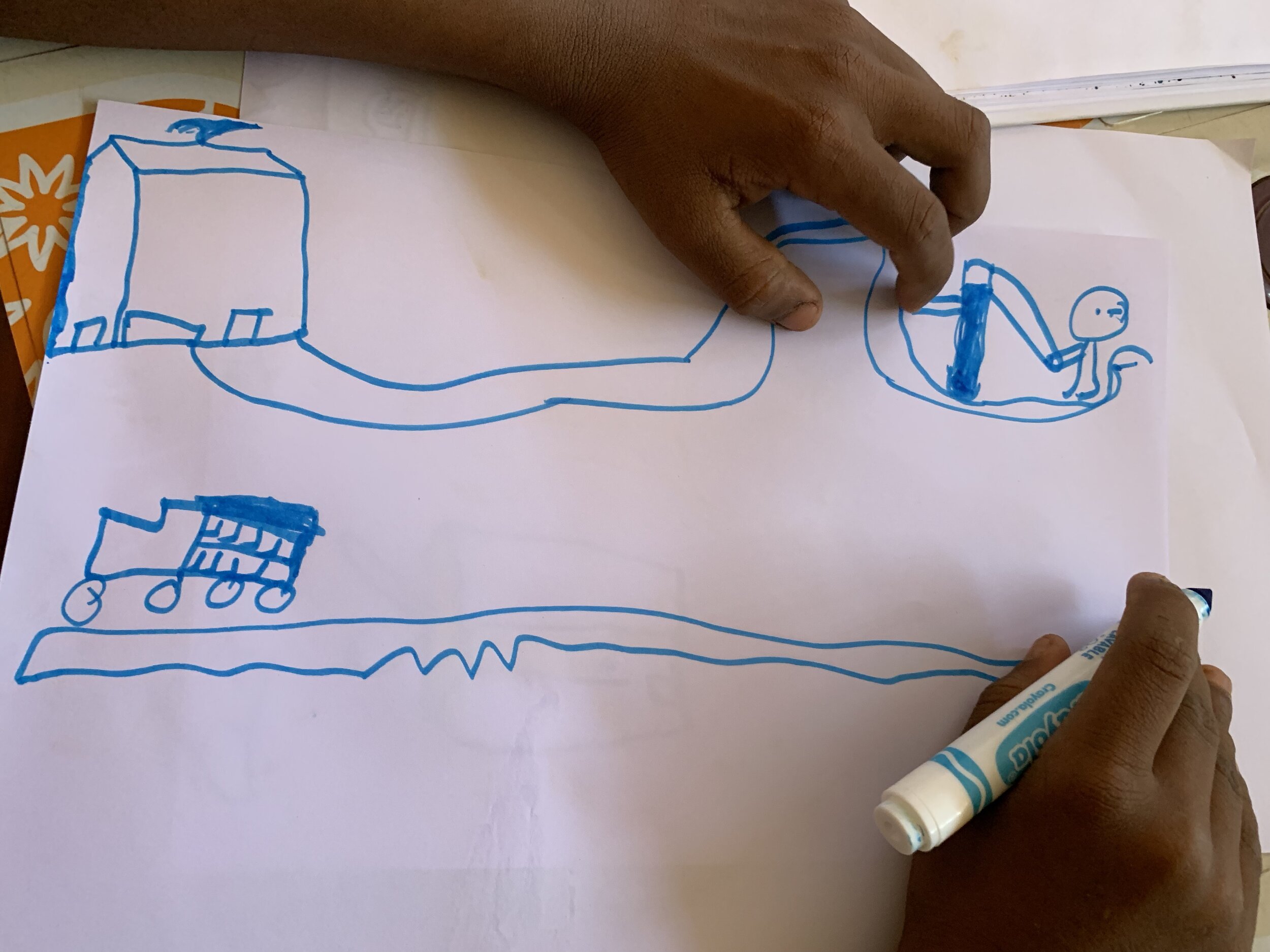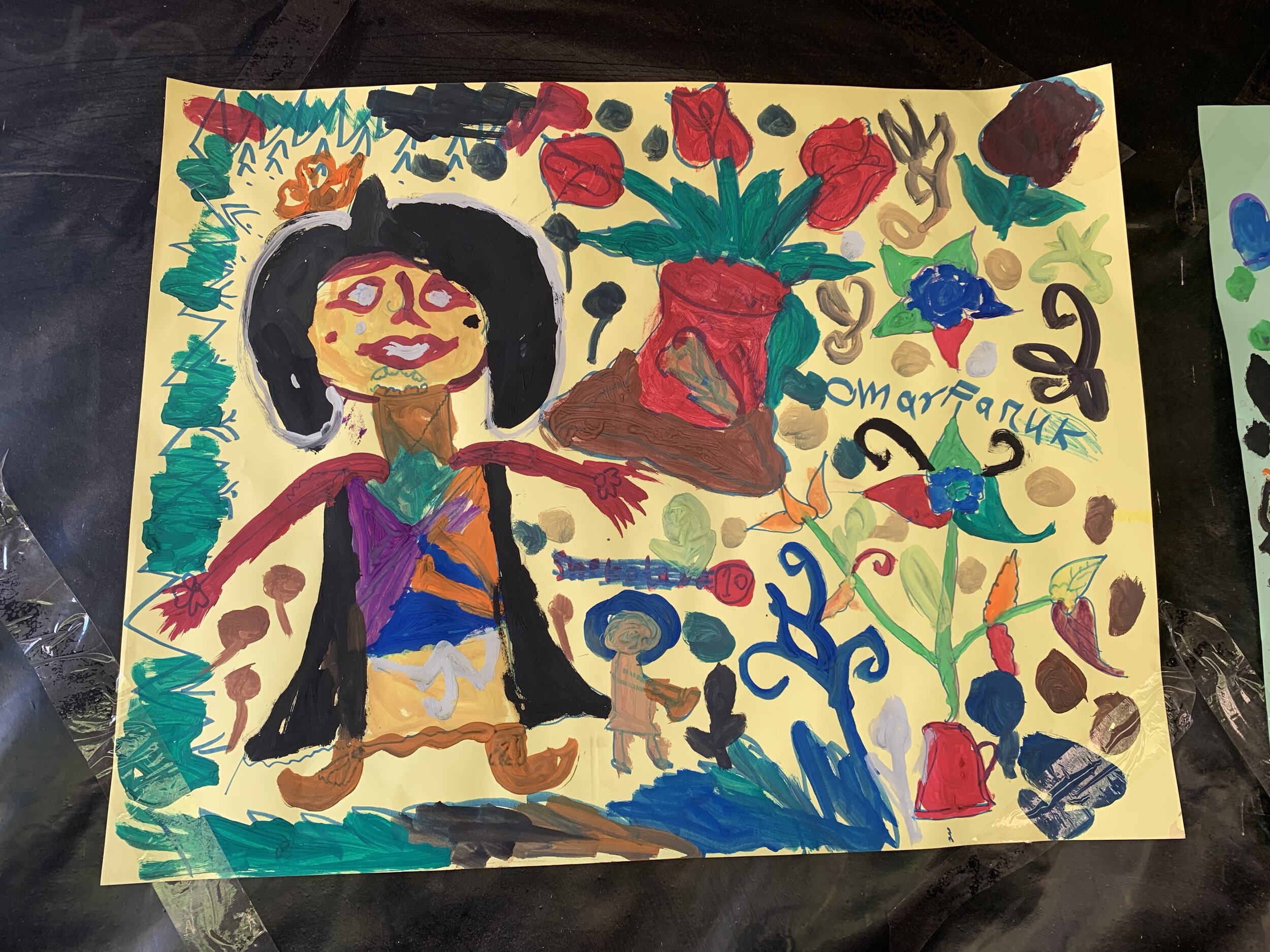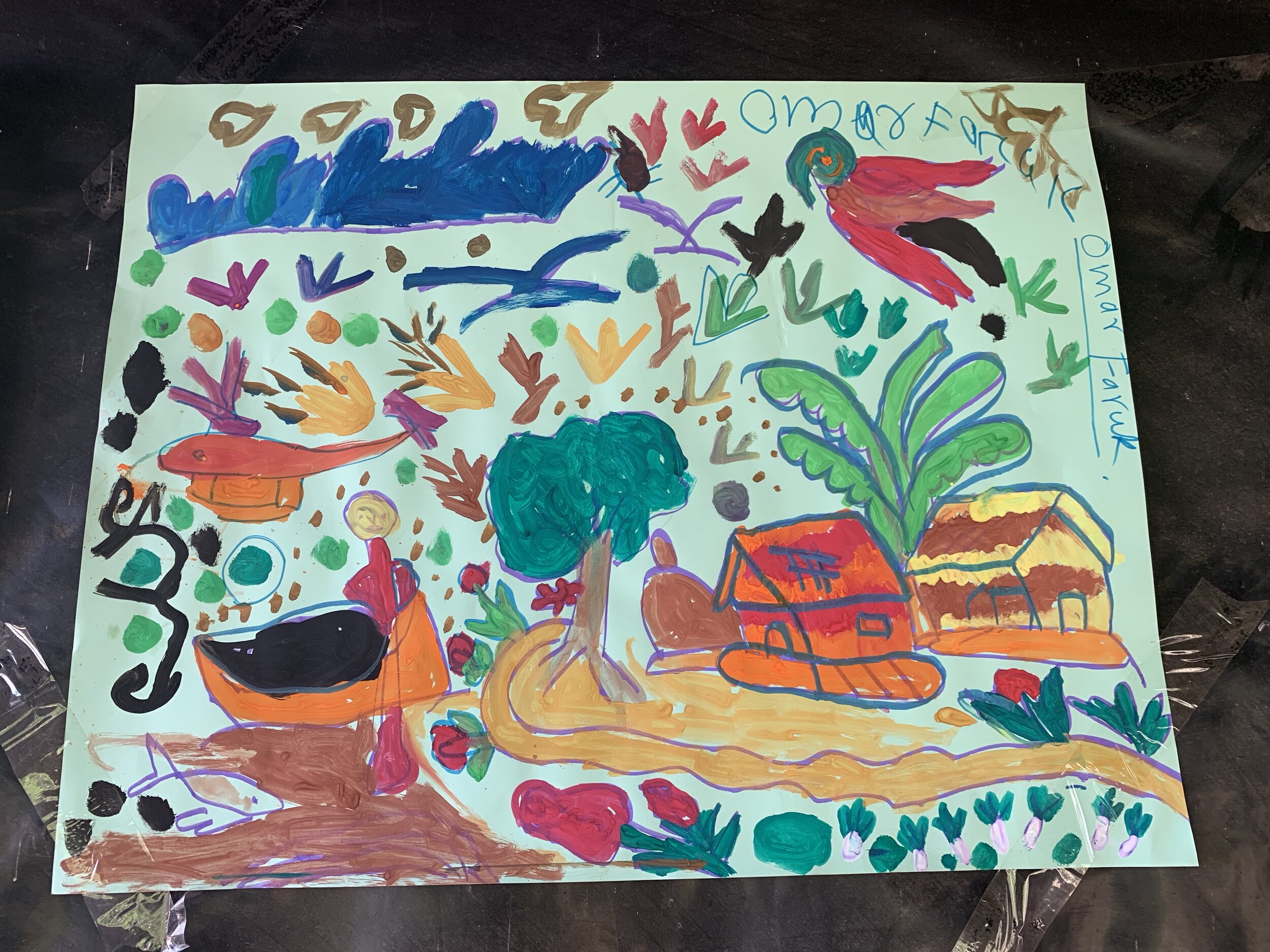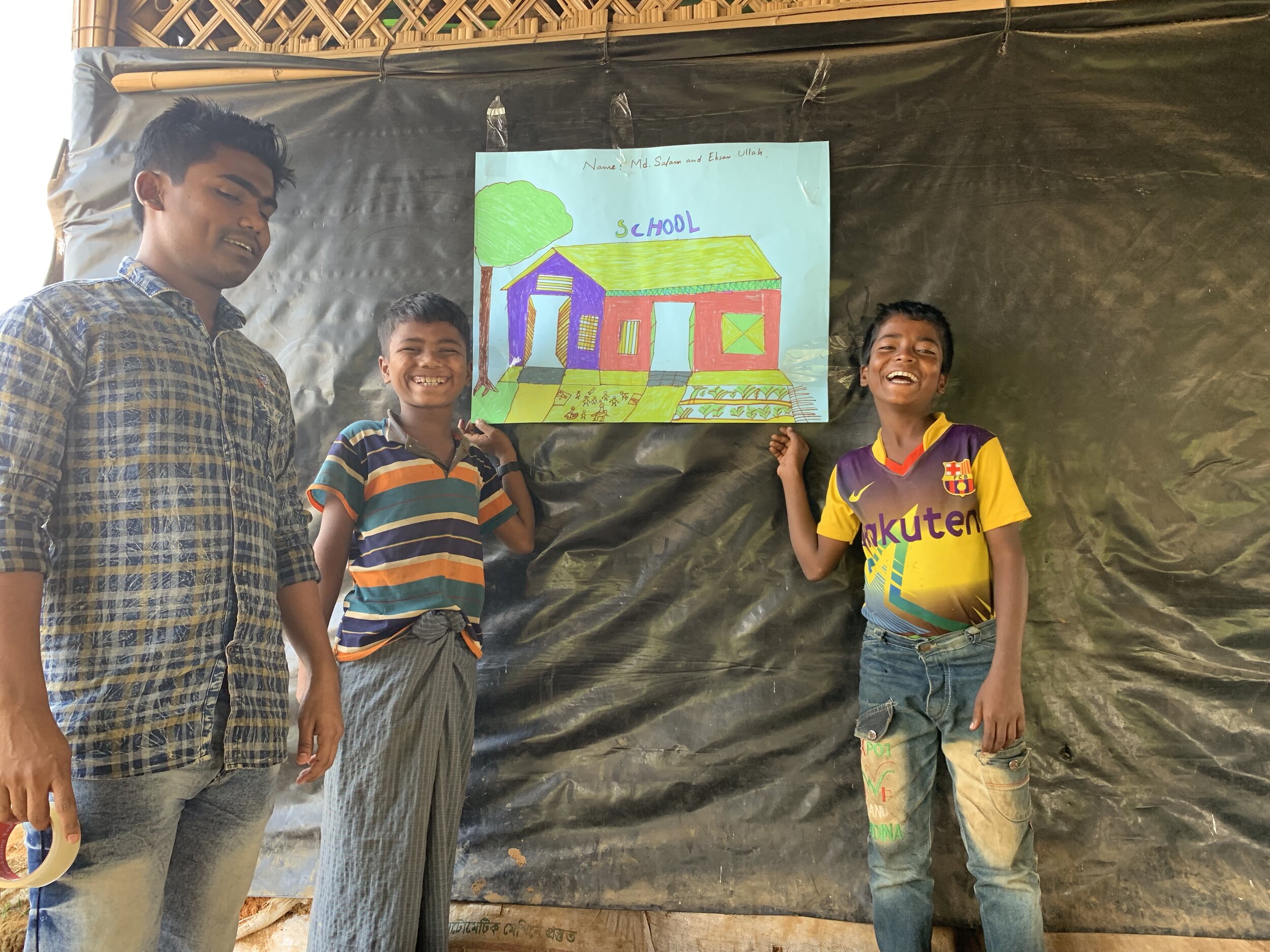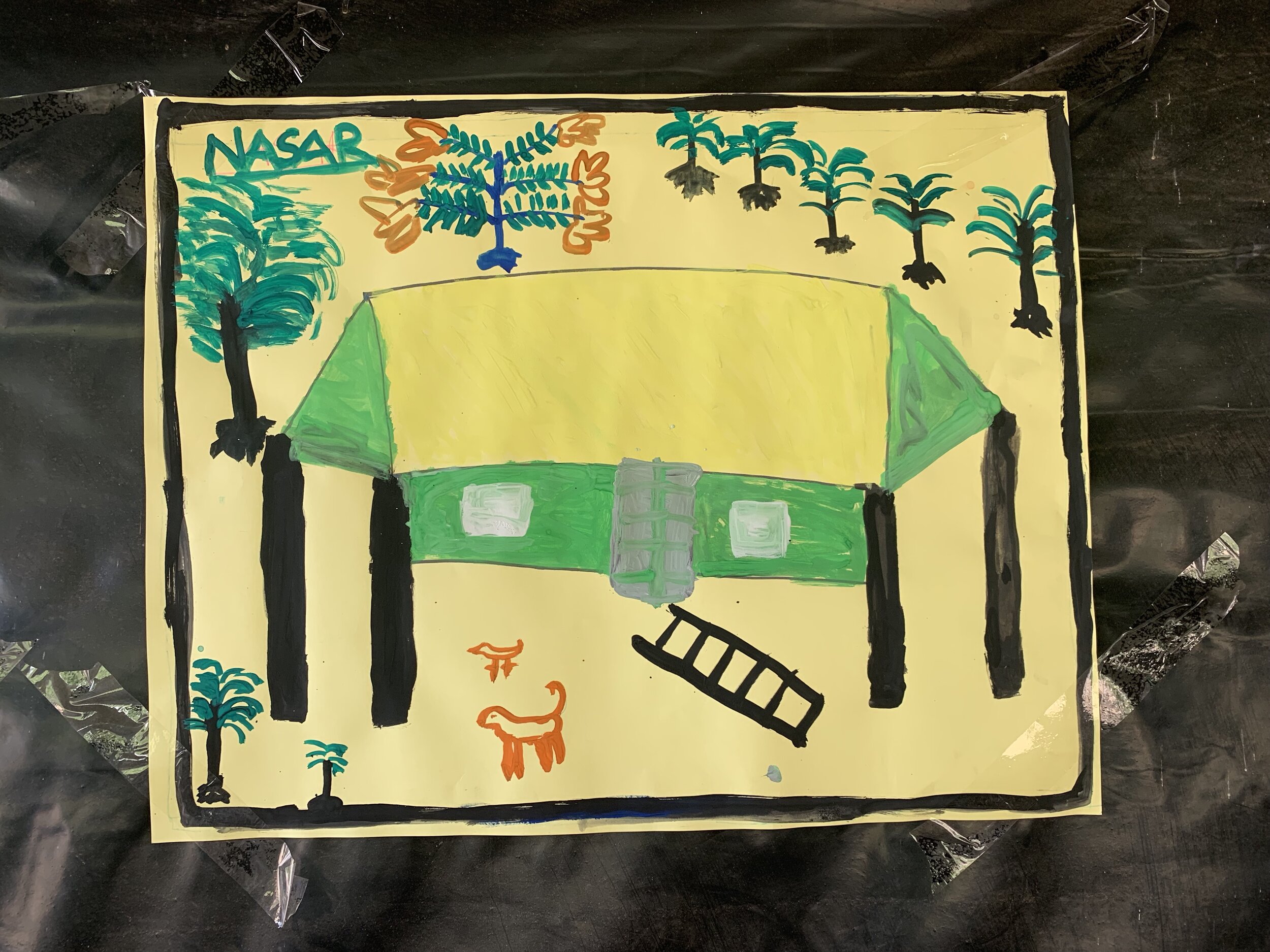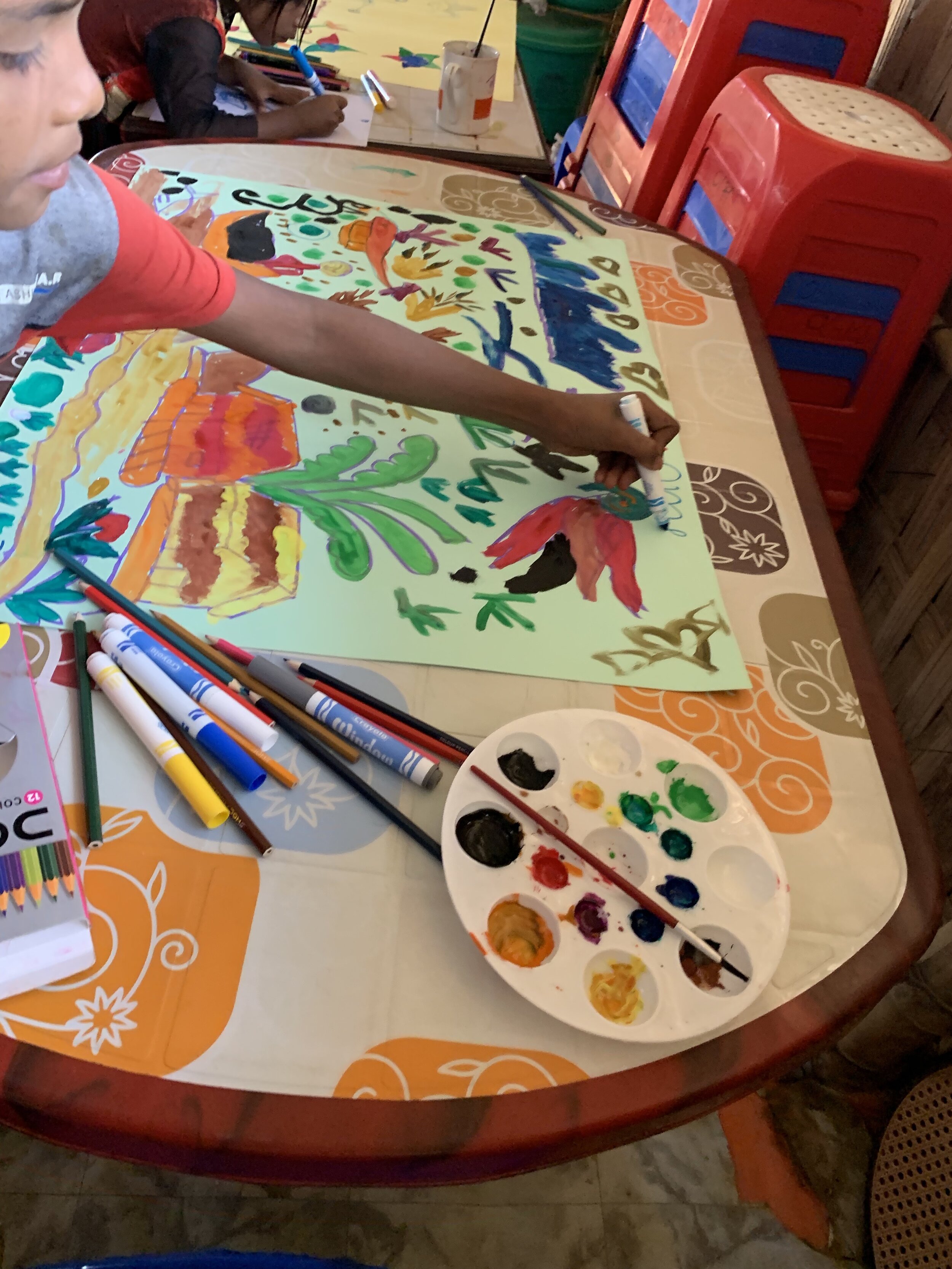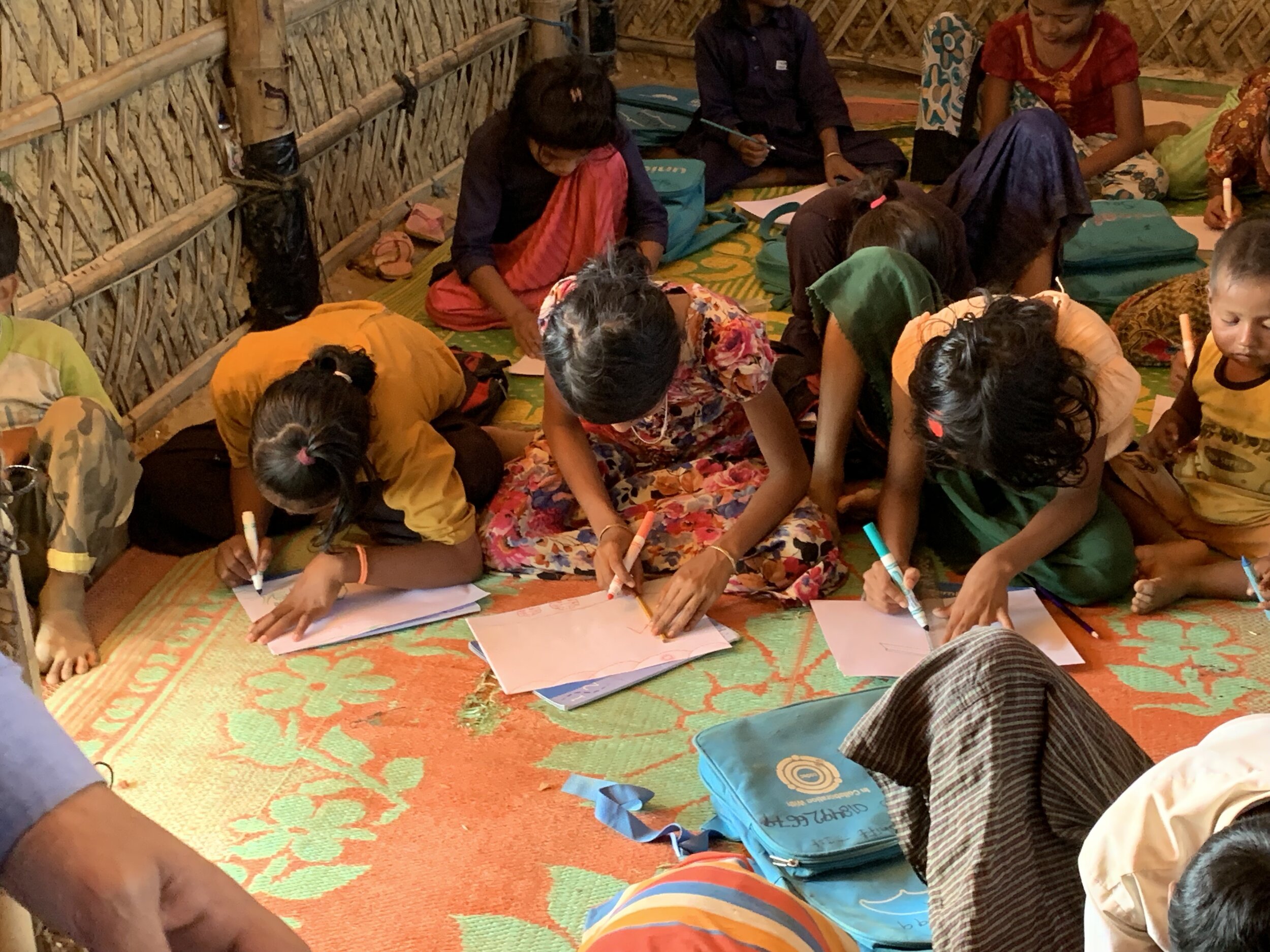
Human Centered Design Report;
Drawing and Story Time hosted by OBAT Helpers in Kutupalong Refugee Camp
In January 2020, OBAT Helpers hosted artist and humanitarian, Jade Hawes, to organize a child-friendly space at the OBAT-Prantic clinic, Kutupalong Refugee Camp. Jade and a Rohingya colleague read to the children from the book “Dear Child,” an illustrated letter of affirmations for Rohingya children. After discussing the book, children were invited to draw freely. 49 different symbols occur in the 123 drawings made by Rohingya children ages 5-13. All 49 symbols are important for seeing the world through their eyes, and for informing future Humanitarian Picture Books. Trees occur in the greatest number of drawings (80), followed by houses (63), rivers (37), flowers (36), schools (35), and suns (34).
This and other Human-Centered Design activities have informed “The Mango Seed,” a Humanitarian Picture Book created in collaboration with Rohingya educators, poets, and illustrators. Stay tuned for an opportunity to purchase this book. Proceeds will go to humanitarian assistance for crisis-affected kids.
Analysis:
Home: When asked about the location of their drawings, children most often said they were in Myanmar. Stilts and ladders indicated that their drawings of houses were in Myanmar. If they drew a school, it was most often their school in Myanmar. Rivers (37), boats (28), and fish swimming in rivers (14), are symbols from home in Myanmar. Food aid includes only rice, lentils, and oil, and few Rohingya are able to purchase fruit in the market. Drawings of fruit (11) are likely memories from home. Large farms may be images from home. There are small garden plots scattered around the refugee camp, and some have started growing spinach on their shelter roofs, but many do not have the space to continue farming and are nostalgic for their large plots of land in Myanmar.
Camp: The Bangladesh flag, which children see around the camp, showed up in 21 out of 123 drawings. Well water pumps (15) and plants growing from the roofs are likely images from camp life. Boys were more likely to draw helicopters (18) than were girls. Interpreters said the children had seen helicopters over the camp and “thought they were cool.”
Games: Boys were more likely to draw children playing soccer (11), but a few girls drew soccer as well. Girls were more likely to draw children jumping rope than were boys (6). Both boys and girls drew children flying kites (12).
Style: Children frequently asked for rulers to draw large, sturdy, multicolored houses and schools. Schools often have windows and open doors through which we can see students (13) and teachers (12). Children include great details including the texture of thatch bamboo walls and roofs, fruits handing from trees, and intricate flower designs. They enthusiastically use a wide variety of color. They often begin by drawing the whole picture with one color, then filling it in with many different colors, not overly concerned with what colors to use. Quite a few children draw aerial views of their lives, including winding paths connecting houses, schools, trees, and rivers. Children draw a variety of trees with unique styles. They also frequently draw a specific style of wooden fishing boat that they are familiar with from home.
